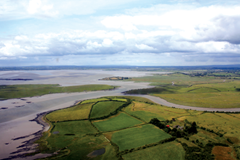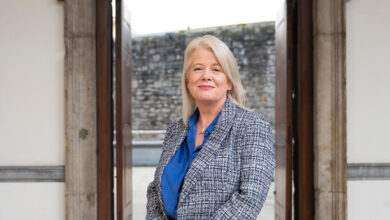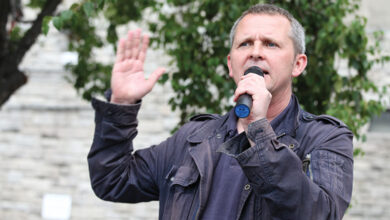Shannon: a regional overview
 eolas looks at the demographics and main industries within the region.
eolas looks at the demographics and main industries within the region.
The Shannon region is located on the west coast of Ireland and covers 10,000 square metres including counties Clare, Limerick, North Tipperary, South Offaly and North Kerry, which together have a population of approximately 450,000 people.
The region is named after the country’s longest river, the Shannon (240 miles long). The entire river is popular with tourists who also visit Shannon’s many attractions, bringing €391 million in revenue into the local economy in 2009 (see pages 72-73). The presidential visit by Barack Obama to his ancestral home of Moneygall, County Offaly is expected to increase visitor footfall and tourism spend in future years.
The region is serviced by Shannon Airport, which in 2009 saw 1.1 million passengers from the UK; 900,000 from continental Europe; 442,000 across the Atlantic and 52,000 within the Republic.
The road network in the region has improved with the completion in 2010 of the N7 Dublin to Limerick motorway and the 675m Limerick Tunnel which runs under the river. However, plans for an Atlantic Corridor that would eventually link Waterford in the south east to Letterkenny in the north west have been stalled due to the economic crisis, although the Ennis bypass and the N18 Limerick to Shannon have already been completed.
CSO statistics (for persons on the live register by social welfare office, sex, age and month, March 2011) show that there were 51,066 people from counties Limerick, Clare, and North Tipperary and the towns of Tralee, Listowel (North Kerry) and Birr (South Offaly) on the live register. That equates to 11 per cent of the region’s population. It is below the national unemployment rate for March 2011: 14.7 per cent.
In 2006, the main employment sectors across the Shannon region were manufacturing, followed by construction and then wholesale and retail. A significant number were also employed by the health and education sectors. Small numbers were employed in property and hotels and catering, all of which have been badly affected by the economic downturn.
Manufacturing remains strong as does the services sector. The Shannon Free Zone in County Clare is a 243 hectare international business park adjacent to Shannon Airport where a cluster of North American firms such as Zimmer, Digital River, Intel, Lufthansa Technik, Molex, RSA Security and Symantec, have invested. The total number of employees in the zone is 6,066, down 254 from last year.
In the past month, Minister for Enterprise Richard Bruton announced that US mobile electronics and accessories firm Zagg plans to create 40 new jobs over five years at its manufacturing facility in the zone, and that the company will carry out its European expansion through this base. In addition, technology firm Bustec was awarded a €15 million contract in April to supply data capture and testing equipment which will be used by the US Navy.
Other key sectors at Shannon Free Zone include aerospace, technology, engineering, pharmaceuticals and healthcare and the main business activities carried out include customer support, financial services, supply chain management, shared services and production. These manufacturing and internationally traded services companies are supported by the state agency Shannon Development.
Another business park, Westpark Shannon business campus, in County Clare, is designed for companies with strong global trading ambitions. Companies currently located there include aviation engineers SES, Enterprise Ireland, Spirit AeroSystems, Aerofuels Overseas, Part M Ireland and Global Business Institute.
Ocean energy is a burgeoning sector and the Shannon Foynes Port Company is calling for the Shannon estuary to be immediately designated an official European ocean energy hub for manufacturing, assembling and servicing of ocean energy equipment.
It is estimated this sector would be worth €9 billion to the economy. The company is planning for a €20 million investment in the creation of the west of Ireland’s only specialised quayside handling and storage area to facilitate investment in renewable energy resources.
The country’s largest coal fired electricity station, Moneypoint is located on the estuary. Owned by ESB, it recently underwent an environmental retrofit and systems upgrade at a cost of over €368 million where NOx and Sox abatement systems were installed to improve the quality of emissions.
Eight hospitals serve the region: St John’s Hospital in Limerick city; the Mid West Regional Hospital in Dooradoyle, County Limerick; the Mid West Regional Orthopaedic Hospital in Croom, County Limerick; Ennis General Hospital in County Clare; Nenagh General Hospital in County Tipperary; Kerry General Hospital and the Midland Regional Hospital, Tullamore in County Offaly.
The University of Limerick is well regarded for its strong research ethos. The university currently has four multi- disciplinary institutes: the Materials and Surface Science Institute, the Stokes Research Institute, the Irish Software Engineering Centre and the Institute for the Study of Knowledge in Society. It also has 36 research centres across departments and colleges such as the Centre for Advancement of Mathematical Education in Technology, the Centre for Energy and Sustainable Environment and the Mobile and Marine Robotics Research Centre. A National Technology Park, managed by Shannon Development, was established in 1984 and has 80 high-technology, knowledge- based companies and employs approximately 3,000 skilled people, has links with the university and the Limerick Institute of Technology.
Ireland’s third largest city, Limerick, is known as the capital of the Mid West and dates back to the Viking settlement of 812. Local government is administered by Limerick City Council whose development plan for the next six years states: “Most new jobs in the county will be created in those activities in the forefront of Ireland’s economic recovery; hi-tech manufacturing and enterprise, with emphasis on export. Important sub-sectors of energy and waste, and logistics and transport should also be given recognition as they each have special requirements.” The document adds: “It is important that all these sectors are recognised and reflected in the zoning of appropriate lands and in development management standards and guidelines. Strategic provision must be made for key enterprises in those economic sectors with most potential.”
Historically Limerick was an agricultural commodity-driven economy, due to its position as the first major port along the Shannon. The city was one of the main meat processing areas in Ireland, and industry included confectionery and flour production. As Ireland’s reputation improved, multinational companies such as Dell located to Limerick. However, in January 2009 Dell announced that it would close its Limerick computer manufacturing plant and move 1,900 jobs to Poland. It currently employs over 1,000 people in service and support.
In order to tackle Limerick’s social problems, the Government established two Limerick Regeneration Agencies in 2007, one for the north side and one for the south side of the city. The agencies plan to regenerate 3,000 homes in the disadvantaged areas. The first phase of the regeneration programme, announced in June 2010 (26 projects such as social housing, clustering of schools and health and community development, valued at €337 million) was prioritised by the previous Government in its Investment Priorities 2010-2016 document. The new Government has told
the agencies that urban regeneration in Limerick is a priority.





